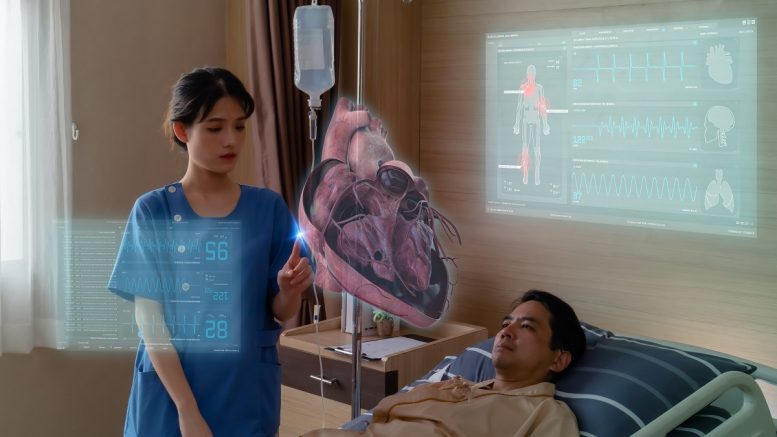Cast your mind back to March 2020. The COVID-19 outbreak was in full swing, causing unprecedented interruptions to communities, patients, and clinicians alike.
Throughout the world, numerous labs, hospitals, and clinical locations shut down unexpectedly, yet the demand for care rose daily. Researchers dropped what they are doing and began working tirelessly to create and test safe and effective vaccines – in record timeframes. Fortunately for them, they found new technologies ready for such a challenge.
Spring boarding from this success, the pharmaceutical industry has since taken significant steps to adapt and evolve its operations based on what was learned. The societal need offered an opportunity to reassess and reimagine how their crucial studies were conducted. It forced the industry to consider new approaches that would allow clinical trials to be conducted quickly – whilst still providing the highest possible levels of safety and efficacy for patients.
This moment in history facilitated a key technological shift in the healthcare industry: the movement to embrace clinical experimentation in the virtual world. In this piece, I’ll explain how virtualization is revolutionising the industry, including insight on how these technologies are already advancing medical innovations, translational research, and precision patient care.
The age of virtual clinical trials
For many, the pandemic was a time of reckoning that demonstrated how their standard processes were no longer sustainable. When tested, the life sciences sector found that the tools and technologies it relied on for clinical trials were simply not fit for purpose in a digital-first world – and this brought to the fore a need for a radical change in the way clinical trials are handled.
With the support of modern digital tools, the industry demonstrated that it can host successful – albeit hybrid or completely virtual – clinical trials to create and test vaccines needed to treat billions of patients – in record time.
Virtualizing the clinical trial brought many advantages, including the use of a synthetic control process, replacing the placebo arm with historical clinical data. The result is a dramatic time and cost savings from recruitment through accumulating findings before submitting a drug candidate for approval.
As the clinical phase was one of the last business sectors to embrace digital methods, the life sciences industry has now proven it can be faster, more precise and has improved the overall testing process for researchers and patients. This innovative approach tackles one of the pharmaceutical industry’s most enigmatic obstacles: delivering unique and effective treatments to patients quickly.
Applying the use of virtual twins
At our recent 3DEXPERIENCE World event, we discussed the use of virtual twins in healthcare. A virtual twin is a fully functional 3D model of a body part, constructed from a patient’s medical information (MRI, CT scan, etc.) combined with a vast amount of human biological and physiological data (a beating heart, a functional brain, and an array of health-related knowledge).
When it comes to streamlining trials, this technology allows laboratories to create patient models prior to the trial taking place – enabling researchers to better assess the potential effects of drug candidates on various patient types in the experimental arm and reduce their dependence on control groups. By utilising virtual twin technology, researchers can identify the risks and predict the results of a drug candidate using models of real patients rather than isolated tissues or animal models. The use of this technology within clinical trials has three main objectives:
- Simplifying the R&D process: Companies have had to reprioritise new research in the wake of the pandemic. Virtual twin technology now enables labs and research teams to create virtual models of nearly anything – from a molecule or a medical device to an entire body system of interest – to test the efficacy and safety in the virtual world. By creating a virtual clinic in the lab, the platforms improve collaboration and help reduce errors and uncertainty by running the entire trial virtually before doing so in the real world.
- Reducing the need for placebo groups: Virtual twins allow researchers to turn huge volumes of data into virtual cohorts of the targeted organs. Clinical data can be combined with virtual to create a data rich synthetic population. In doing so, they can predict treatment and non-treatment scenarios. As clinical data grows, the synthetic population becomes increasingly robust.
- Speeding up information sharing and controls: Since all the data lives in a structured, centralised, highly secured digital platform, it is much easier to analyse and share with relevant parties, whilst managing authorisations and ensuring patient privacy.
The pandemic demonstrated that the healthcare sector could adapt to a radical change in operations, improving collaboration across teams and organisations and speeding up the entire clinical trial process. I believe this was possible thanks to the prior decade of work creating the tools that enabled the industry to tackle one of the biggest public health crises of the 21st century. These can also be used to devise treatments for deadly diagnoses such as heart disease, cancer or Alzheimer’s.
The future of virtual technology in healthcare
Unlike in the pre-pandemic world, the future of healthcare now looks bright. We have now seen what is possible through digital mapping collaborations such as the Living Heart Project – the first to make a virtual twin of the human heart a reality. Through the teamwork of more than 150 institutions from research, industry and medical professions under the watchful eye of regulatory authorities, we’ve developed the first realistic 3D simulation of a complete beating heart usable by anyone with SIMULIA software.
Science has grappled with the complex conditions of the human heart for decades and its interaction with other organs, drugs and treatment methods is of particular interest. While doctors may have a plethora of treatment options, heart disease remains the #1 cause of death worldwide. Our collaboration between biomedical scientists, engineers and cardiovascular clinicians are bringing us closer to making full reconstruction of the heart a standard practice. For the most demanding patients, such as for children with complex congenital heart defects, we have shown this is the ideal way determine the best course of action.
This is just one example of how virtual twin technology is transforming healthcare – doctors who use it will never go back. With our now eyes open to it’s potential, I expect it to play a significant role in supporting and accelerating the research still needed to save lives. From discovering and testing new drug treatments to launching entirely new classes of medical devices, the hurdles of translating laboratory success to clinical success are going away. Most importantly, patients everywhere will get the right treatment the first time.
In the future, with the enhanced, patient friendly data management tools enabled by virtual twins, healthcare professionals will broaden the scope of participants in clinical trials – ensuring greater representative of the patient population. The result will be more inclusive treatments, tailored to the specific needs of all patients.
The pandemic put the healthcare industry to the test. While there was a great cost, it revealed those areas ready for the future and those stuck in the past. By capitalizing on these insights, we are now poised to establish virtual clinical trials as common practice, ushering in a new era of preventive, precise and cost-effective care that is accessible to everyone.
Dr. Steve Levine, Senior Director of Virtual Human Modelling, Dassault Systèmes





